Our Three Fields artists Deepa Reddy, Kaajal Modi and Samukelisiwe Siphesihle Dube have now embarked on their remote collaboration, experimenting in ways to find rich, creative connection across continents through environmentally conscious digital practices.
Key conversations have started to manifest around how food and food production connect to stories of migration and global movement. From these initial conversations, the artists selected sites within contexts local to them (India, the UK and South Africa) drawing on their own communities to explore links between the local and global and how creative digital technology can be used to capture the sensorial nature of these physical sites within a shared immersive experience.
Hear more from our artists about their field trips and the initial provocations they inspired.
Kaajal Modi
My site visit was to Kirkgate Market and Worsbrough Mill. These are (respectively) a working Victorian market in Leeds and a heritage mill in Barnsley. The aim was to join up food contexts that are sites of production to sites of supply and preparation and sale, particularly in terms of the relationships between people, knowledge and ingredients that link (or could potentially link) them. In the morning we visited Kirkgate, making our way through the layers of history that the physical building embodies and interacting with some of the market traders and their wares. The market sells food, but also textiles, homewares and electronics. To me this resonates with the interwoven infrastructures of growing, making and trade that underpin global goods and services. Food and textiles are often grown on the same farms in the global south during different seasons, and digital technologies rely on minerals from many of the same places that our foods (and, as migrant communities, our ancestors) originated from.
The food at Kirkgate (and UK food in general) is from countries that have a historic trade relationship with the UK, often (although not always) via colonisation. As a result, many migrant communities in the UK also travel from those places (often as they had British passports and skills that were considered valuable in factories and in healthcare). Many of the traders are from these parts of the world, and bring their foods (and other goods) with them to sell (often, but not exclusively) to members of their own communities. There is fresh produce, as well as dried and shelf stable goods such as spices, pickles, pastes and grains, and there are many traders who cook and sell ready-to-eat foods on-site, predominantly in the food court. Much of this food is imported from South Asia and parts of Africa, and I noted many of the staple foods we had been discussing in our artist group (such as millet, achar, mangoes, spices) were available at many of the stalls. Many of the stalls are also empty, some for refurbishment, but one trader I spoke to said that spaces were expensive and felt there wasn’t as much support from the council for traders as there could be.
In the afternoon, we visited the site of Worsborough Mill, a (usually working) heritage mill that grinds grains from local farms into flour using hydro-power from the on-site reservoir. Unfortunately when we were there the central axle of the mill was broken, and the mill was out of commission. Ben Marsh, our tour guide, explained how it had been difficult to find a millwright with the skills to repair it, as their current millwright is no longer able to take on bigger repairs as he gets older. A part I found interesting was the “graffiti” above the fireplace where the original millers family likely slept, including some “millers marks” to ward off bad spirits.
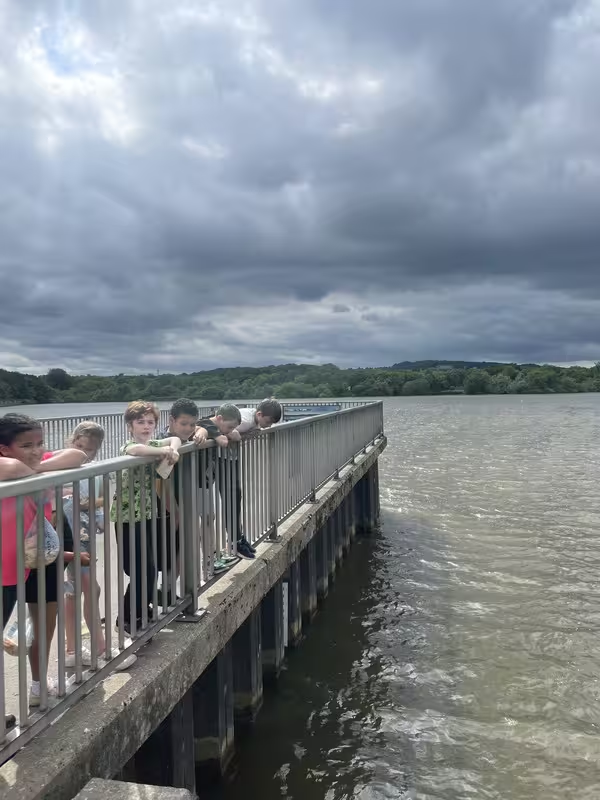
As well as the stone and water mill, which dates back to (what they estimate to be) the 1400s, there is also a nature park on-site with a rich selection of plants (including wild foods such as plums, nettle and bramble), a small herb garden planted by volunteers, and a patch of Himalayan Balsam, an “invasive” plant that Ben told us was “bashed” back in early spring before it flowered by volunteers. Himalayan Balsam has a rich history as a garden plant that was brought over from Kashmir by the Victorians, and in its native context it is also eaten by locals as part of curries and pickled salads.
Samukelisiwe Siphesihle Dube
For my site visit, we went through the Soweto Garden Route: Food Sovereignty Experience, within Johannesburg, South Africa. The first location was at the Food Sovereignty Hub at Wits University: Agroecology & Syntropy, where we met with one of the managers of the garden, who took us on a tour of the garden and seedbank. We were given a short history about the place, the people that work there, as well as the aim and purpose of the garden. The garden grew various types of vegetables and herbs, such as spinach, beetroot, cauliflower, mugwort, etc. Our tour guide grabbed a few raw vegetables and herbs from the garden for us to try. Some of the people I was with were hesitant at first, but as they saw me eating without question they began to nibble as well. As someone who has their own garden, I am accustomed to tasting raw vegetables straight from the ground.
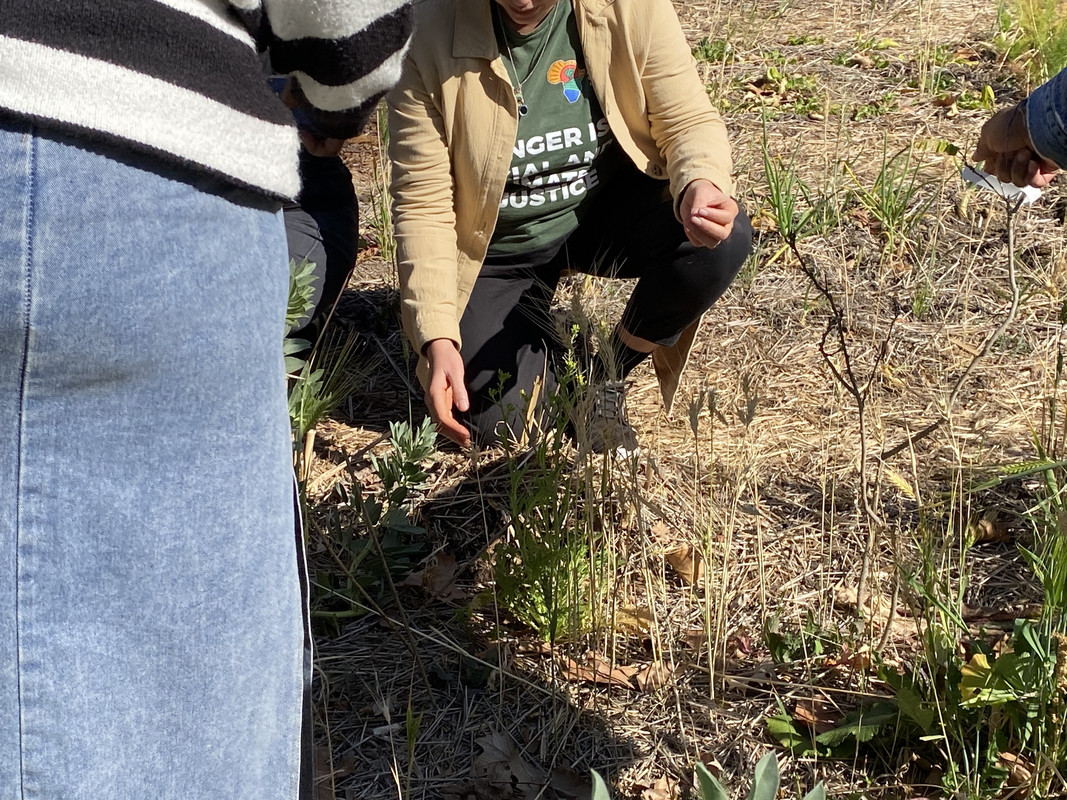
Our second location was at Victoria Yards, Inmed Aquaphonics. A space filled with different creative possibilities such as artist studios, handmade book shops, restaurants, etc., all surrounded by poly-cultured gardens as you walk through the space. We learnt about climate resilient farming, which is integrated into a work space in which people occupy and are able to buy the vegetables and herbs that are grown in the space around them.
The last place we went to made a rather beautiful impact on me. The Dihoai Agriculture Project NPO at Lerechabetse Primary is a Food Sovereignty and Skills hub with a community farm, skills centre, classes and kitchen. The space was once a primary school which was abandoned as a result of upheaval during Apartheid South Africa. It has now been turned into a space of faith, soil and story, as the community managed to purchase the school and create a communal space open to everyone. There is a small scale farm that was developed and run by 2 black women who are part of the community. They have no agricultural background but were able to grow crops within the land and learnt how to garden by observing and learning from the garden itself. The surrounding community are able to purchase the vegetables and herbs grown in the garden, such as spinach, chillies, parsley, cabbage, etc. People who live in the area or anywhere else are able to go there to volunteer and help out in any way they can.
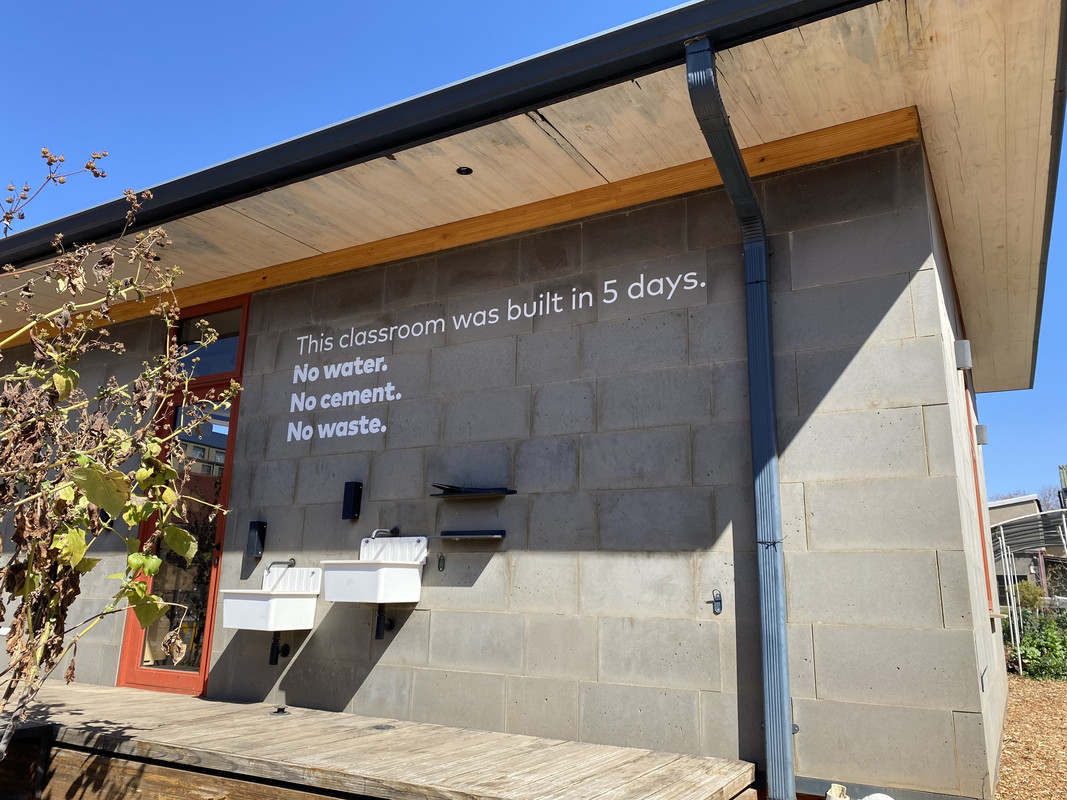
Deepa Reddy
My field visit was to the fish and meat markets of Pondicherry. The fish market is very much part of the city’s cultural ethos, this being a seaside town, and apart from being just very messy (fish guts and slime!), it was not culturally a difficult visit.
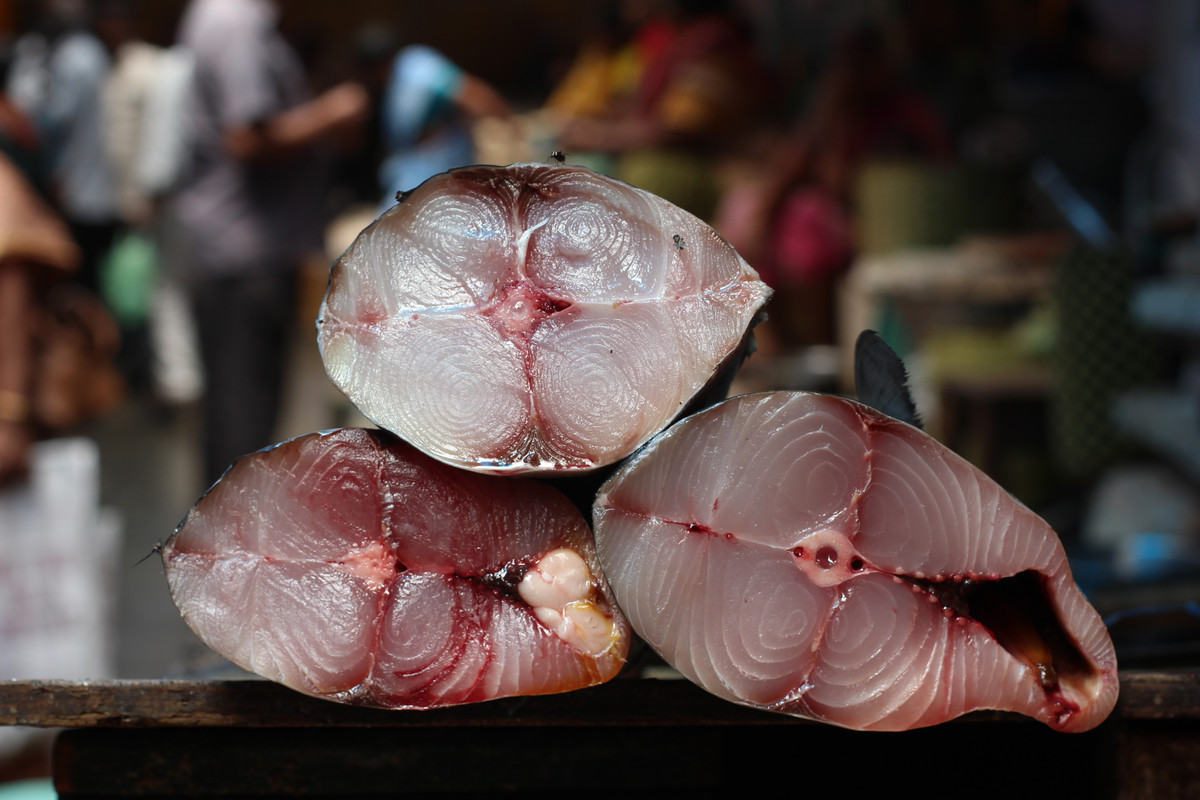
The beef market was a bit harder. With the help of a local cook, who works in the kitchens of one of Pondicherry’s creole socialites, I found my way to what he called the best stall in town, at one edge, towards Villianoor. (He was concerned I should see/get the best cuts). We went on a Friday, which is the day the Muslim butchers prepare fresh meat. The slaughter had happened already, at the back, but I was still forbidden to go there. What was out front for us to see was just hanging carcass parts, and men with butcher knives working to cut whatever they needed to sell. “Not my world at all,” said another man who’d accompanied us. Cow slaughter is a sensitive topic among Hindus, but I’d wanted to face myself this other side of the pastoralism that we otherwise valorise, venerate, and worship–or simply turn a blind eye to, the way we do for all other meats. This was a key reason for my wanting to visit, just to face this other side of the food economy that was not mine, and to see what it brought out in me.
Sriram and I went to the big fish market, that one July day in Pondicherry, the way we sometimes step into worlds we know are not our own—gingerly and a bit fearfully. The place is messy, for one, wet with sea water and fresh, guts and slime. The salt spray of ocean waves can’t get you here, but that flying cleaver coming down can splash you something stinky. Women I know who go there to buy fish come home and change clothes and wash feet; it’s like you’ve to transform yourself to go, and transform yourself to come back.
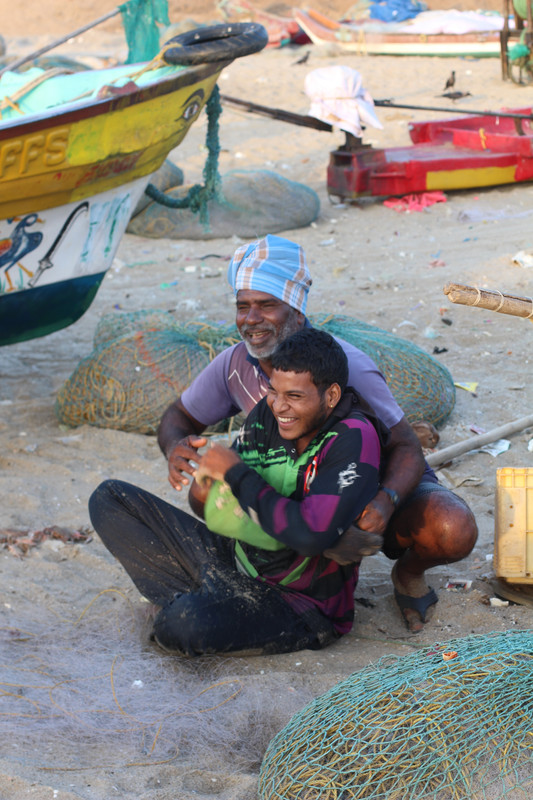
Women selling on one end, women cleaning on another—there are two stops to make. This is a world of matrons. Men are incidental, having done their fishing already, hanging about or sharpening knives with wheels making sparks. Piles of refuse on which scavenging crows perch, less gingerly but not more fearfully than us. Everyone with a ritual and a role. The market is its own sort of sustaining force with its own unique push-pull, and we the visitors from outer space being jostled.
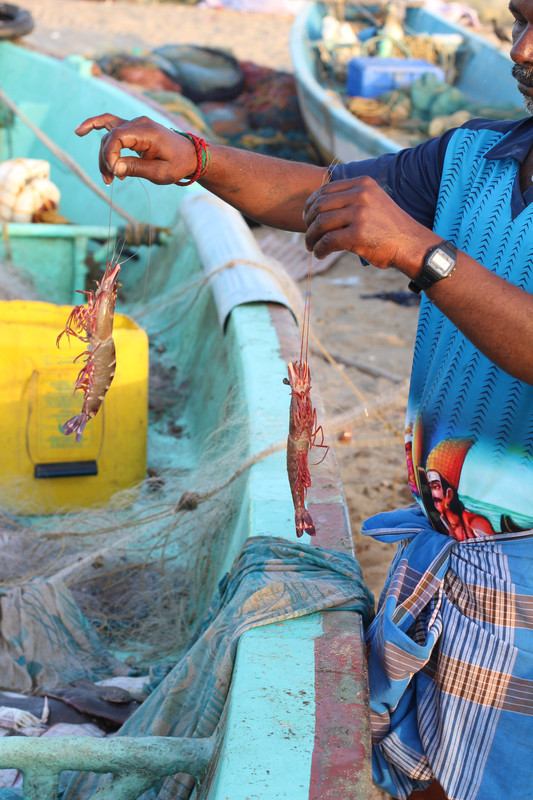
Anthropologists once had villages, once upon a time, or was it that villages had anthropologists. Sure neither of having or being had, I never wrote the stories of this place though every story I’ve ever written is really of this place. But now, see? I’m making a different beginning. And see how Sriram brought his camera magic to this first chapter?
We will be sharing more insights from Three Fields at Fak’ugesi in October 2025. Sign up to their newsletter for more programme details.
Three Fields is an international collaboration between Abandon Normal Devices, Arts Catalyst, Fakugesi, Fast Familiar and Unbox. Funded by the British Council’s International Collaboration Grants and supported using public funding by Arts Council England.